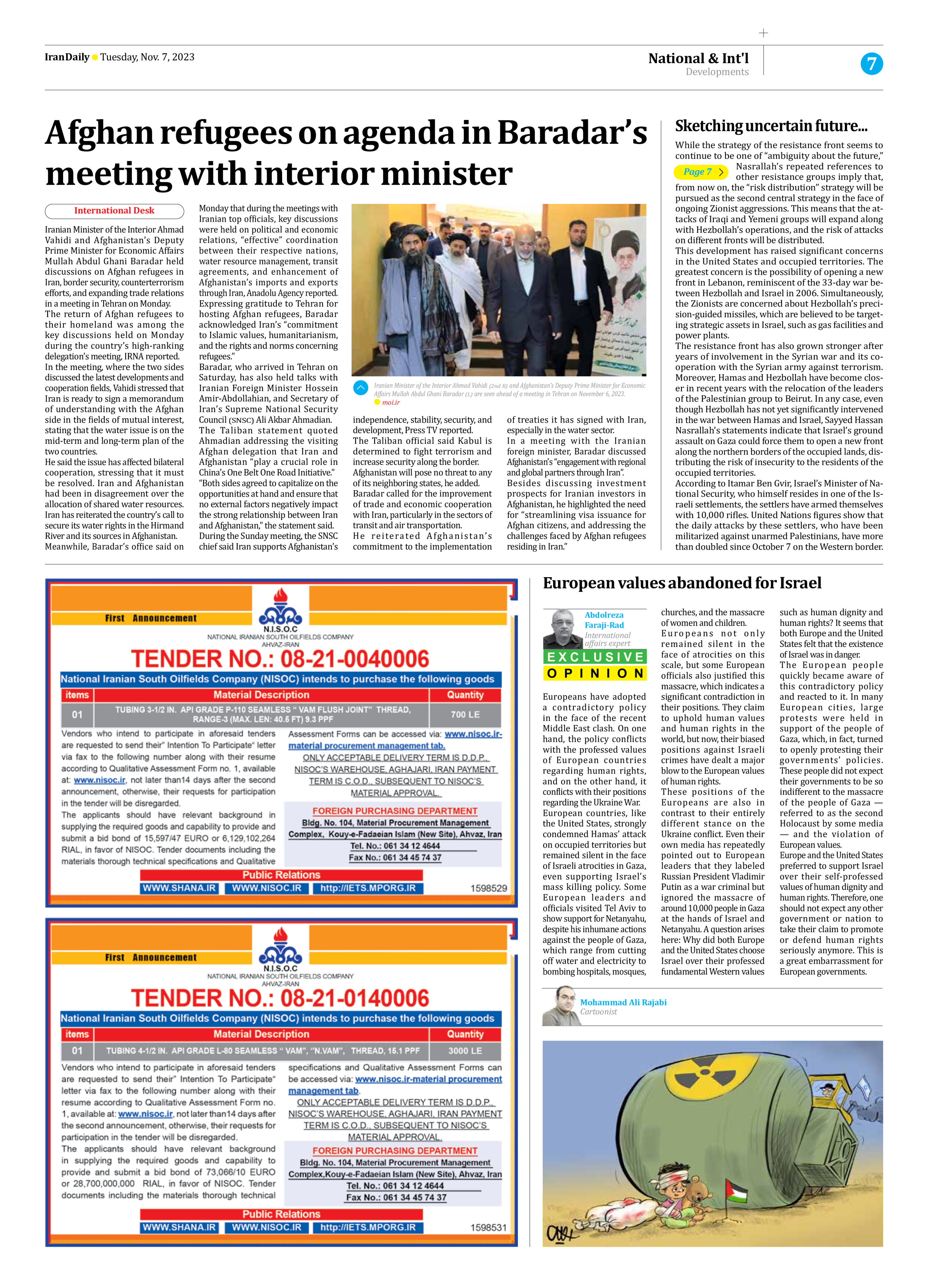
Sketching uncertain future...
Page 7
While the strategy of the resistance front seems to continue to be one of “ambiguity about the future,” Nasrallah’s repeated references to other resistance groups imply that, from now on, the “risk distribution” strategy will be pursued as the second central strategy in the face of ongoing Zionist aggressions. This means that the attacks of Iraqi and Yemeni groups will expand along with Hezbollah’s operations, and the risk of attacks on different fronts will be distributed.
This development has raised significant concerns in the United States and occupied territories. The greatest concern is the possibility of opening a new front in Lebanon, reminiscent of the 33-day war between Hezbollah and Israel in 2006. Simultaneously, the Zionists are concerned about Hezbollah’s precision-guided missiles, which are believed to be targeting strategic assets in Israel, such as gas facilities and power plants.
The resistance front has also grown stronger after years of involvement in the Syrian war and its cooperation with the Syrian army against terrorism. Moreover, Hamas and Hezbollah have become closer in recent years with the relocation of the leaders of the Palestinian group to Beirut. In any case, even though Hezbollah has not yet significantly intervened in the war between Hamas and Israel, Sayyed Hassan Nasrallah’s statements indicate that Israel’s ground assault on Gaza could force them to open a new front along the northern borders of the occupied lands, distributing the risk of insecurity to the residents of the occupied territories.
According to Itamar Ben Gvir, Israel’s Minister of National Security, who himself resides in one of the Israeli settlements, the settlers have armed themselves with 10,000 rifles. United Nations figures show that the daily attacks by these settlers, who have been militarized against unarmed Palestinians, have more than doubled since October 7 on the Western border.







